How to audit your preventative maintenance schedule

Timing is everything We’ve all heard the joke about what’s the secret to great comedy… timing! But it’s not just when delivering a joke and its punchline that timing is important; it’s also a vital component of any preventative maintenance schedule. Implement a system where any maintenance is performed too often and you’re immediately wasting […]
Transition to Outcome-Based Service with Asset Aviator

When Bob Dylan wrote ‘the times they are a-changin’ it’s doubtful that he was referring to field services industries. But it certainly is a fitting epithet for multiple industries – ranging from HVAC to mechanical to facilities management – that are all deep in the middle of an evolution from traditional services to outcome-based models. […]
Work Order Management: Are bad business processes costing your business?

Work order management is a critical function that ensures problems are swiftly resolved by qualified people in a timely manner. At least that’s what happens when everything works smoothly. But when work order management breaks down it can cause significant problems that can affect equipment availability and your ability to meet customer needs. Garbage in, […]
Understanding OEE is the key to maximising ROI

When you understand how to measure the performance of your assets, you can create strategies to improve their output and reduce your operational costs. One of the most important metrics asset owners and managers is Overall Equipment effectiveness (OEE). The OEE is closely correlated with the total cost of ownership of an asset. This is […]
‘Right to Repair’ in the HVAC sector – what you should know

There has been much talk in the media recently about ‘the right to repair’ and how Australia is lagging behind such countries as the UK and the US regarding its legislation in this area. This is why the Federal Government’s independent research and advisory body, the Productivity Commission, is now in the process of examining […]
How to know when your business needs Asset Management Software

When the famous management consultant Peter Drucker said “You can’t manage what you don’t measure” he omitted an important element. You need to know what to measure. It may seem obvious but, too often, businesses measure what’s easy rather than what’s valuable. Asset management software helps you identify what’s valuable in your business so you […]
